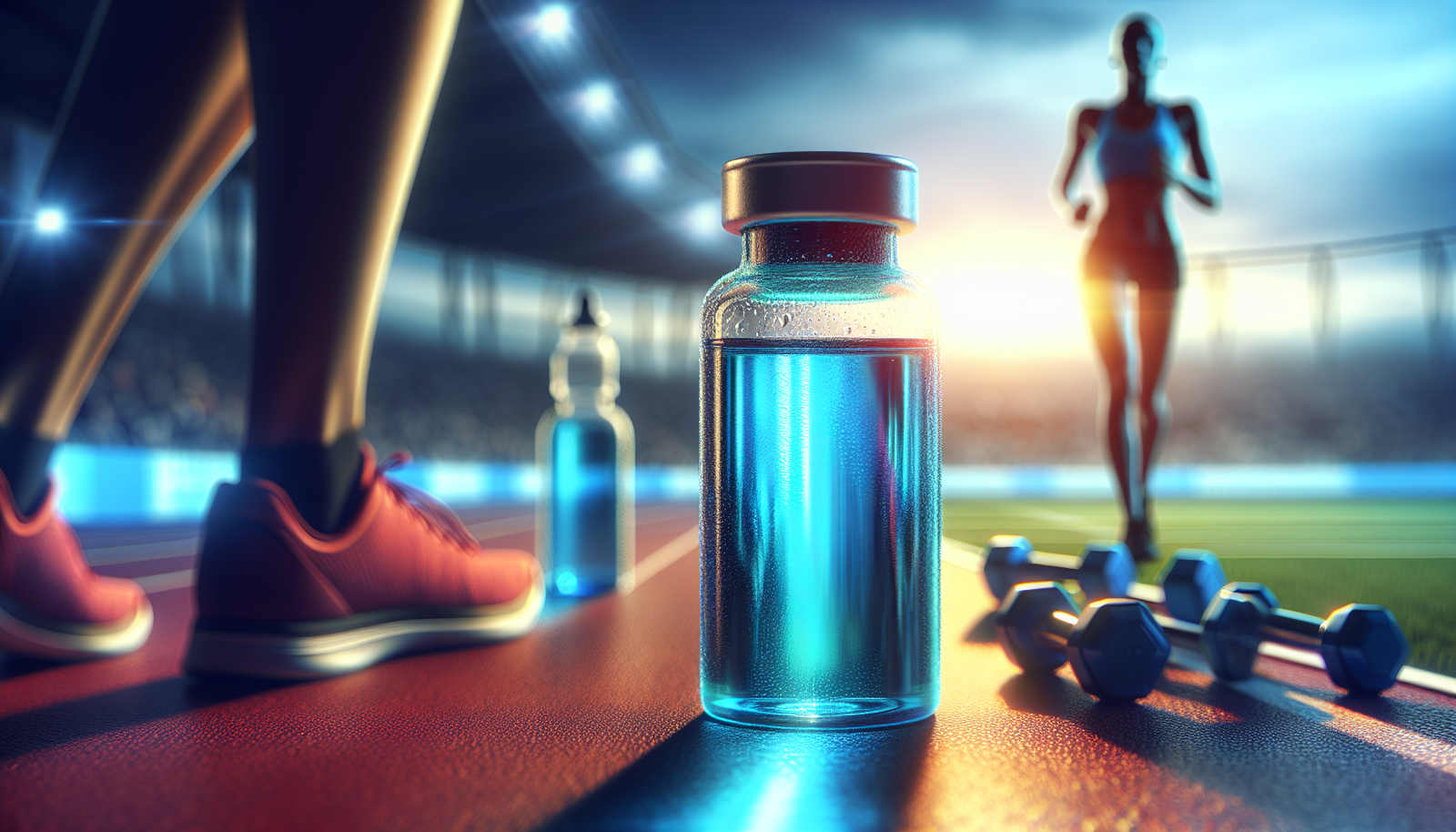
Have you ever considered how a single compound can potentially enhance your athletic performance? The interest surrounding Methylene Blue has burgeoned in recent years, particularly among athletes who constantly seek that extra edge. Understanding its properties, benefits, and potential drawbacks may provide you with the insights necessary to integrate it into your training regimen.
What is Methylene Blue?
Methylene Blue is a synthetic dye that has been employed for various purposes, including medical treatments, laboratory staining, and even as a potential cognitive enhancer. Initially discovered in the late 19th century, it boasts a range of applications that extend far beyond its basic utility as a colorant.
Historical Context
This compound has a rich history in the medical field. It was once used to treat malaria and later gained recognition for its utility in treating methemoglobinemia—a condition where hemoglobin cannot effectively release oxygen to body tissues. Beyond its medical significance, Methylene Blue has sparked interest in biohacking communities, particularly for its alleged benefits related to enhanced mitochondrial function.
The Mechanism of Action
Understanding how Methylene Blue operates at a biochemical level demystifies its potential benefits. The compound influences several pathways in the body.
Electron Transport Chain
Methylene Blue acts as an alternative electron donor in the electron transport chain (ETC), which is essential for ATP (adenosine triphosphate) production. In the simplest terms, ATP is the currency of energy in cells, and enhancing its production may lead to improved energy availability for athletic performance.
Mitochondrial Function
By supporting mitochondrial health, Methylene Blue enhances oxidative phosphorylation—the process whereby cells generate energy. Greater mitochondrial efficiency translates to improved stamina and endurance during intense workouts or competitions.
Antioxidant Properties
Another significant function of Methylene Blue is its role as an antioxidant. It reduces oxidative stress, which can contribute to muscle fatigue and impair recovery. By managing oxidative stress levels, you may be able to sustain performance longer and recover more swiftly.

Benefits for Athletes
The potential benefits of Methylene Blue for athletes are numerous, ranging from enhanced performance to faster recovery. Below are several areas where this compound may have a meaningful impact.
Enhanced Endurance
The boost in mitochondrial function can lead to improved endurance due to greater ATP production. Enhanced energy capacity allows you to push through barriers that may have previously hindered your performance.
| Benefit | Description |
|---|---|
| Increased ATP | Greater energy availability during exercise |
| Enhanced Stamina | Improved ability to sustain physical activity |
| Prolonged Performance | Ability to perform at high levels longer |
Improved Recovery
Post-exercise recovery is a crucial aspect of an athlete’s training regimen. By mitigating muscle damage and oxidative stress, Methylene Blue may facilitate quicker recovery times, enabling you to train harder and more frequently.
| Recovery Aspect | Impact |
|---|---|
| Reduced Muscle Damage | Diminished soreness and fatigue |
| Quicker Recovery Times | Enhanced ability to participate in training |
| Improved Muscle Repair | Better results from training programs |
Cognitive Enhancement
Athletic performance is not solely dependent on physical capabilities; mental acuity plays a significant role. Methylene Blue has been studied for its potential cognitive benefits, including improved focus, reaction time, and decision-making skills.
| Cognitive Benefit | Impact |
|---|---|
| Enhanced Focus | Greater concentration during training |
| Improved Reaction Time | Quicker response during competition |
| Better Decision-Making | Improved tactical choices in sports |
Dosage and Administration
While Methylene Blue presents numerous benefits, understanding the appropriate dosage is essential. Too little may be ineffective, while too much could lead to adverse effects.
Recommended Dosage
Research commonly suggests a dosage of 0.5 to 4 mg per kilogram of body weight for general use. However, as with any supplement, personal factors such as weight, age, and overall health should be taken into consideration.
Administration Methods
Methylene Blue can be administered in several forms, including:
- Oral Tablets: Convenient and straightforward for daily intake.
- Intravenous (IV) Injection: Typically reserved for medical settings but is the most effective for rapid effects.
- Topical Application: Less common but feasible for specific conditions.
| Method of Administration | Pros | Cons |
|---|---|---|
| Oral Tablets | Easy to take | Slower absorption |
| IV Injection | Fast-acting | Requires medical supervision |
| Topical Application | Targeted use | Limited effectiveness |

Potential Side Effects
As you consider incorporating Methylene Blue into your routine, it’s crucial to acknowledge any potential side effects. While many people tolerate the compound well, it may produce negative reactions in some individuals.
Common Side Effects
Methylene Blue may lead to various side effects, including:
- Nausea
- Headaches
- Dizziness
Serious Side Effects
Though rare, some individuals may experience more severe side effects, such as:
- Severe allergic reactions
- Serotonin syndrome when combined with certain medications
| Side Effect | Likelihood | Recommendations |
|---|---|---|
| Nausea | Common | Take with food or adjust dosage |
| Headaches | Common | Stay hydrated and consult a professional |
| Allergic Reactions | Rare | Discontinue use and seek medical advice |
| Serotonin Syndrome | Very Rare | Avoid mixing with MAO inhibitors |
Consultation with Healthcare Professionals
Before integrating Methylene Blue into your athletic routine, it’s prudent to consult with a healthcare professional. A qualified doctor can provide guidance based on your individual needs, current medications, and overall health status.
Importance of Professional Guidance
The landscape of supplements is vast, and what works for one individual may not necessarily work for another. A professional can help tailor recommendations, ensuring that you reap the benefits of Methylene Blue while minimizing potential risks.
Monitoring and Adjustment
Once you begin using Methylene Blue, regular monitoring can help you assess its effectiveness and any side effects. Your healthcare provider may recommend periodic check-ins to fine-tune your dosage and usage.

Conclusion
The potential benefits of Methylene Blue for athletes are becoming increasingly evident. By enhancing mitochondrial function, improving endurance, and aiding recovery, this compound offers a range of advantages that can support your athletic endeavors. However, the importance of informed and responsible usage cannot be overstated. Consulting with a healthcare professional and closely monitoring your response are essential steps to ensure a positive experience.
As you contemplate the role of Methylene Blue in your training strategy, consider how it aligns with your overall goals and values. In the pursuit of athletic excellence, the quest for enhancement should always be balanced with health, well-being, and informed decision-making. By understanding the science behind Methylene Blue and its implications for your body, you can make choices that empower your athletic ambitions.